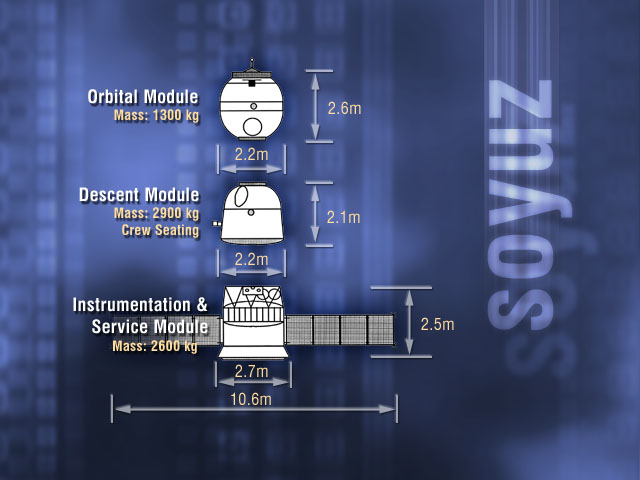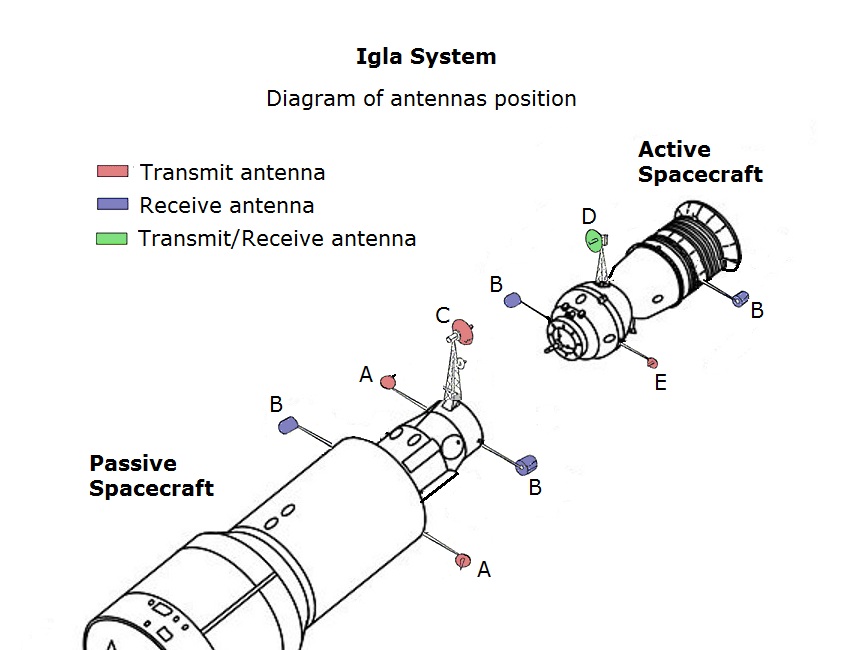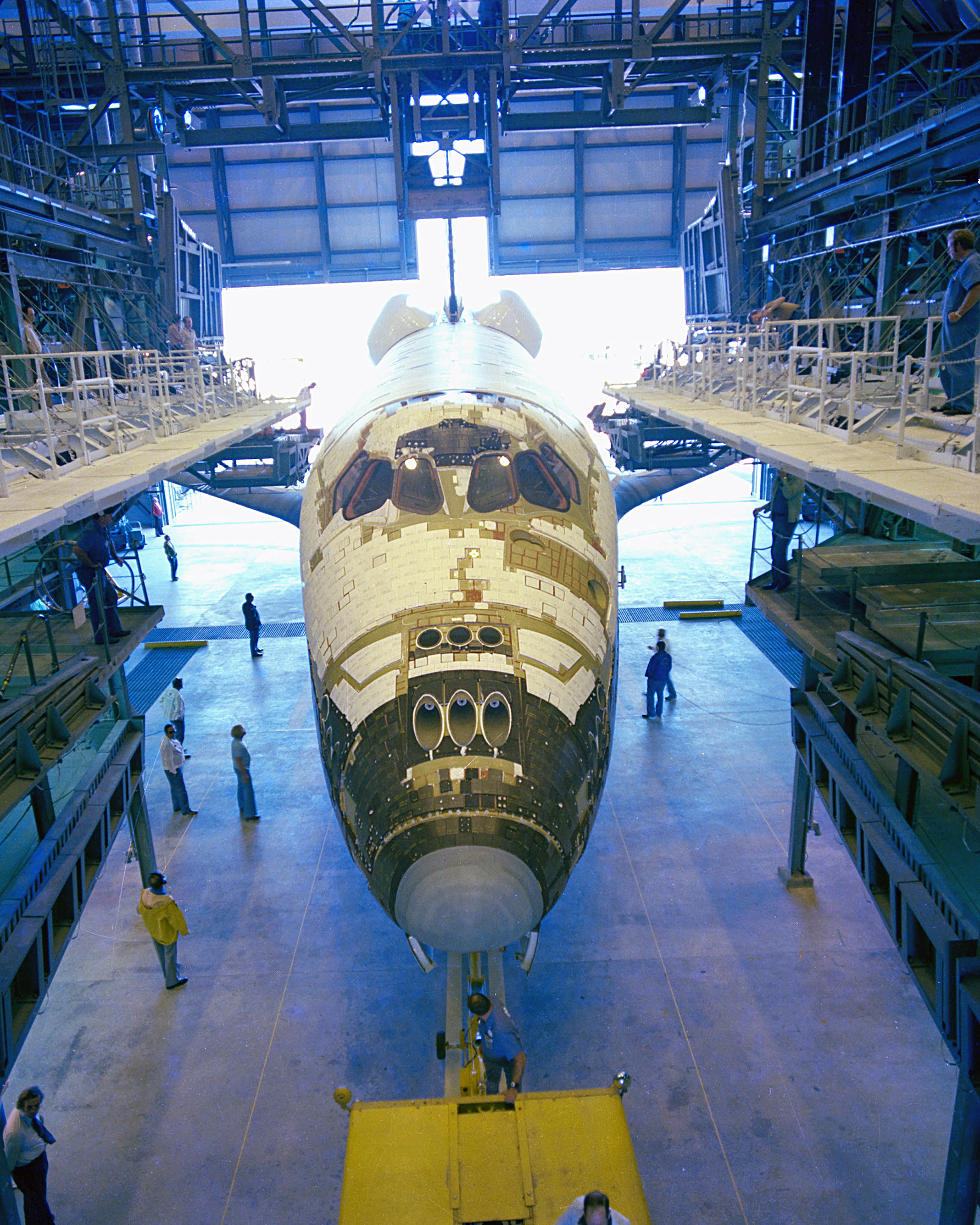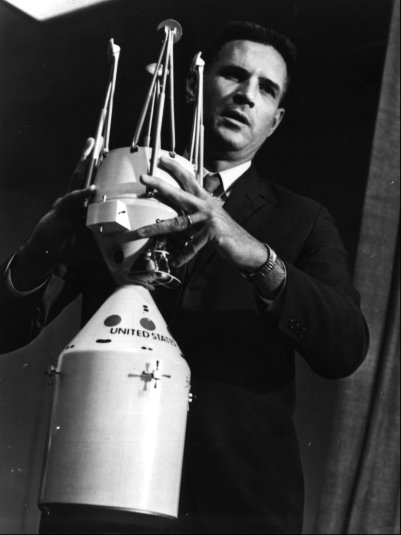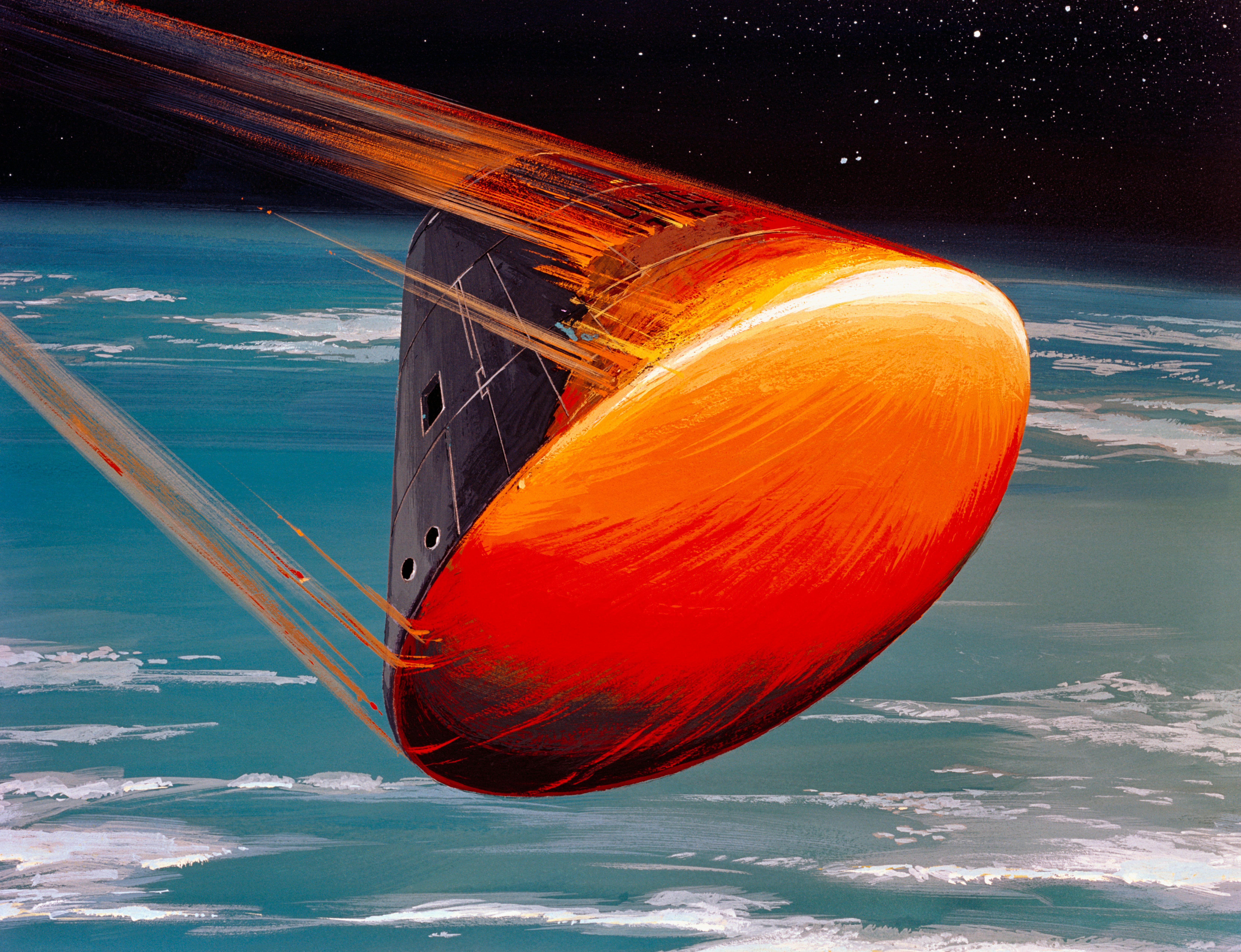|
Space Docking
Docking and berthing of spacecraft is the joining of two space vehicles. This connection can be temporary, or partially permanent such as for space station modules. ''Docking'' specifically refers to joining of two separate free-flying space vehicles. ''Berthing'' refers to mating operations where a passive module/vehicle is placed into the mating interface of another space vehicle by using a robotic arm. Because the modern process of un-berthing requires more crew labor and is time-consuming, berthing operations are unsuited for rapid crew evacuations in the event of an emergency. History Docking Spacecraft docking capability depends on space rendezvous, the ability of two spacecraft to find each other and station-keep in the same orbit. This was first developed by the United States for Project Gemini. It was planned for the crew of Gemini 6 to rendezvous and manually dock under the command of Wally Schirra, with an uncrewed Agena Target Vehicle in October 1965, but t ... [...More Info...] [...Related Items...] OR: [Wikipedia] [Google] [Baidu] |
Progress (spacecraft)
The Progress () is a Russian expendable cargo spacecraft. Originally developed for the Soviet space program and derived from the crewed Soyuz (spacecraft), Soyuz spacecraft, Progress has been instrumental in maintaining long-duration space missions by providing consumables like food, water, and air, as well as maintenance equipment. Since its maiden flight in 1978, Progress has supported various space stations, including Salyut 6, Salyut 7, and Mir, and remains a key resupply vehicle for the International Space Station (ISS). Each Progress mission delivers thousands of kilograms of supplies in its pressurized module. It also carries water, fuel, and gases to replenish the station's resources and sustain its onboard atmosphere. Beyond resupply duties, a docked Progress can maneuver or reboost the station, countering atmospheric drag and maintaining its operational altitude. When a Progress spacecraft nears the end of its design life, it is loaded with waste, undocked, and deorbit ... [...More Info...] [...Related Items...] OR: [Wikipedia] [Google] [Baidu] |
Gemini 8
Gemini 8 (officially Gemini VIII) With Gemini IV, NASA changed to Roman numerals for Gemini mission designations. was the sixth crewed spaceflight in NASA's Project Gemini, Gemini program. It was launched on March 16, 1966, and was the 14th crewed American flight and the 22nd crewed spaceflight overall. The mission conducted the first docking of two spacecraft in orbit, but also suffered the first critical in-space system failure of a U.S. spacecraft. Astronauts Neil Armstrong and David Scott temporarily lost Spacecraft attitude determination and control, attitude control of their craft during the docking procedure, which threatened their lives and resulted in an immediate abort of the mission. The crew returned to Earth safely. Background Command pilot Neil Armstrong resigned his commission in the U.S. Naval Reserve in 1960, and was selected as a crew member for Gemini 8 in September 1965. His flight marked the second time a U.S. civilian flew into space (after Joseph Albert Wal ... [...More Info...] [...Related Items...] OR: [Wikipedia] [Google] [Baidu] |
Soyuz (spacecraft)
Soyuz () is a series of spacecraft which has been in service since the 1960s, having made more than 140 flights. It was designed for the Soviet space program by the Korolev Design Bureau (now Energia (corporation), Energia). The Soyuz succeeded the Voskhod spacecraft and was originally built as part of the Soviet crewed lunar programs. It is launched atop the similarly named Soyuz (rocket family), Soyuz rocket from the Baikonur Cosmodrome in Kazakhstan. Following the Soviet Union's dissolution, Roscosmos, the Russian space agency, continued to develop and utilize the Soyuz. Between the Space Shuttle retirement, Space Shuttle's 2011 retirement and the SpaceX Crew Dragon's 2020 debut, Soyuz was the sole means of crewed transportation to and from the International Space Station, a role it continues to fulfill. The Soyuz design has also influenced other spacecraft, including China's Shenzhou (spacecraft), Shenzhou and Russia's Progress (spacecraft), Progress cargo vehicle. The Soyu ... [...More Info...] [...Related Items...] OR: [Wikipedia] [Google] [Baidu] |
Igla (spacecraft Docking System)
The Igla (, "Needle") docking system was a Soviet radio telemetry system for automated docking of Soyuz (spacecraft), Soyuz spacecraft. The first prototypes were made in late 1965. On 30 October 1967, the first automated docking of Soyuz uncrewed spacecraft took place. Problems * The Soyuz 15 mission was aborted when the system failed to dock to the Salyut#Salyut 3, Salyut 3, on 26 August 1974. There was no manual backup system. * Salyut#Salyut5, Salyut 5, launched on June 22, 1976, was equipped with an improved radio system. On July 6, 1976, Soyuz 21 had problems undocking automatically, but was able to undock manually. Soyuz 23 failed to dock, ran out of fuel to manual dock, and returned to Earth. *The Igla docking system suffered an engine failure on Soyuz 33 on 10 April, 1979. After consideration by ground crews, the mission was aborted by firing the back up engines and initiating a ballistic reentry. Kurs In 1986 Igla was succeeded by the Kurs (docking system), Kurs docking s ... [...More Info...] [...Related Items...] OR: [Wikipedia] [Google] [Baidu] |
Space Shuttle
The Space Shuttle is a retired, partially reusable launch system, reusable low Earth orbital spacecraft system operated from 1981 to 2011 by the U.S. National Aeronautics and Space Administration (NASA) as part of the Space Shuttle program. Its official program name was the Space Transportation System (STS), taken from the 1969 plan led by U.S. vice president Spiro Agnew for a system of reusable spacecraft where it was the only item funded for development. The first (STS-1) of four orbital test flights occurred in 1981, leading to operational flights (STS-5) beginning in 1982. Five complete Space Shuttle orbiter vehicles were built and flown on a total of 135 missions from 1981 to 2011. They launched from the Kennedy Space Center (KSC) in Florida. Operational missions launched numerous satellites, interplanetary probes, and the Hubble Space Telescope (HST), conducted science experiments in orbit, participated in the Shuttle–Mir program, Shuttle-''Mir'' program with Russia, ... [...More Info...] [...Related Items...] OR: [Wikipedia] [Google] [Baidu] |
Skylab
Skylab was the United States' first space station, launched by NASA, occupied for about 24 weeks between May 1973 and February 1974. It was operated by three trios of astronaut crews: Skylab 2, Skylab 3, and Skylab 4. Skylab was constructed from a repurposed Saturn V third stage (the S-IVB), and took the place of the stage during launch. Operations included an orbital workshop, a solar observatory, Earth observation and hundreds of experiments. Skylab's orbit eventually decayed and it disintegrated in the atmosphere on July 11, 1979, scattering debris across the Indian Ocean and Western Australia. Overview Skylab was the only space station operated exclusively by the United States. A permanent station was planned starting in 1988, but its funding was canceled and U.S. participation shifted to the International Space Station in 1993. Skylab had a mass of with a Apollo command and service module (CSM) attached and included a workshop, a solar observatory, and sever ... [...More Info...] [...Related Items...] OR: [Wikipedia] [Google] [Baidu] |
Apollo 13
Apollo 13 (April 1117, 1970) was the seventh crewed mission in the Apollo program, Apollo space program and would have been the third Moon landing. The craft was launched from Kennedy Space Center on April 11, 1970, but the landing was aborted after an oxygen tank in the Apollo command and service module#Service module (SM), service module (SM) exploded two days into the mission, disabling its electrical and life-support system. The crew, supported by backup systems on the Apollo Lunar Module, lunar module (LM), instead looped around the Moon in a circumlunar trajectory and returned safely to Earth on April 17. The mission was commanded by Jim Lovell, with Jack Swigert as Apollo command and service module#Command module (CM), command module (CM) pilot and Fred Haise as Apollo Lunar Module, Lunar Module (LM) pilot. Swigert was a late replacement for Ken Mattingly, who was grounded after exposure to rubella. A routine stir of an oxygen tank ignited damaged wire insulation insid ... [...More Info...] [...Related Items...] OR: [Wikipedia] [Google] [Baidu] |
Apollo 10
Apollo 10 (May 18–26, 1969) was the fourth human spaceflight in the United States' Apollo program and the second to orbit the Moon. NASA, the mission's operator, described it as a "dress rehearsal" for the first Moon landing (Apollo 11, two months later). It was designated an List of Apollo missions#Alphabetical mission types, "F"mission, intended to test all spacecraft components and procedures short of actual descent and landing. After the spacecraft reached lunar orbit, astronaut John Young (astronaut), John Young remained in the Apollo Command and Service Module, Command and Service Module (CSM) while astronauts Thomas P. Stafford, Thomas Stafford and Gene Cernan flew the Apollo Lunar Module (LM) to within (7.8 nautical miles; ) of the lunar surface, the point at which powered descent for landing would begin on a landing mission. After four orbits they rejoined Young in the CSM and, after the CSM completed its 31st orbit of the Moon, they returned safely to Earth. ... [...More Info...] [...Related Items...] OR: [Wikipedia] [Google] [Baidu] |
Apollo 9
Apollo 9 (March 3–13, 1969) was the third human spaceflight in NASA's Apollo program, which successfully tested systems and procedures critical to landing on the Moon. The three-man crew consisted of Commander James McDivitt, Command Module Pilot David Scott, and Lunar Module Pilot Rusty Schweickart. Flown in low Earth orbit, it was the second crewed Apollo mission that the United States launched via a Saturn V rocket, and was the first flight of the full Apollo spacecraft: the command and service module (CSM) with the Lunar Module (LM). The mission was flown to qualify the LM for lunar orbit operations in preparation for the first Moon landing by demonstrating its descent and ascent propulsion systems, showing that its crew could fly it independently, then rendezvous and dock with the CSM again, as would be required for the first crewed lunar landing. Other objectives of the flight included firing the LM descent engine to propel the spacecraft stack as a backup ... [...More Info...] [...Related Items...] OR: [Wikipedia] [Google] [Baidu] |
Low Earth Orbit
A low Earth orbit (LEO) is an geocentric orbit, orbit around Earth with a orbital period, period of 128 minutes or less (making at least 11.25 orbits per day) and an orbital eccentricity, eccentricity less than 0.25. Most of the artificial objects in outer space are in LEO, peaking in number at an altitude around , while the farthest in LEO, before medium Earth orbit (MEO), have an altitude of 2,000 km, about one-third of the Earth radius, radius of Earth and near the beginning of the Van Allen radiation belt#Inner belt, inner Van Allen radiation belt. The term ''LEO region'' is used for the area of space below an altitude of (about one-third of Earth's radius). Objects in orbits that pass through this zone, even if they have an apogee further out or are sub-orbital spaceflight, sub-orbital, are carefully tracked since they present a collision risk to the many LEO satellites. No human spaceflights other than the lunar missions of the Apollo program (1968-1972) have gone beyond L ... [...More Info...] [...Related Items...] OR: [Wikipedia] [Google] [Baidu] |
Apollo Lunar Module
The Apollo Lunar Module (LM ), originally designated the Lunar Excursion Module (LEM), was the lunar lander spacecraft that was flown between lunar orbit and the Moon's surface during the United States' Apollo program. It was the first crewed spacecraft to operate exclusively in the airless vacuum of space, and remains the only crewed vehicle to land anywhere beyond Earth. Structurally and aerodynamically incapable of flight through Earth's atmosphere, the Multistage rocket , two-stage Lunar Module was ferried to lunar orbit attached to the Apollo command and service module (CSM), about twice its mass. Its crew of two flew the Lunar Module from lunar orbit to the Moon's surface. During takeoff, the spent descent stage was used as a launch pad for the ascent stage which then Lunar orbit rendezvous, flew back to the command module, after which it was also discarded. Overseen by Grumman, the LM's development was plagued with problems that delayed its first uncrewed flight by about ... [...More Info...] [...Related Items...] OR: [Wikipedia] [Google] [Baidu] |
Apollo Command And Service Module
The Apollo command and service module (CSM) was one of two principal components of the United States Apollo (spacecraft), Apollo spacecraft, used for the Apollo program, which landed astronauts on the Moon between 1969 and 1972. The CSM functioned as a mother ship, which carried a crew of three astronauts and the second Apollo spacecraft, the Apollo Lunar Module, to lunar orbit, and brought the astronauts back to Earth. It consisted of two parts: the conical command module, a cabin that housed the crew and carried equipment needed for atmospheric reentry and splashdown (spacecraft landing), splashdown; and the cylindrical service module which provided propulsion, electrical power and storage for various consumables required during a mission. An umbilical cable, umbilical connection transferred power and consumables between the two modules. Just before reentry of the command module on the return home, the umbilical connection was severed and the service module was cast off and al ... [...More Info...] [...Related Items...] OR: [Wikipedia] [Google] [Baidu] |


